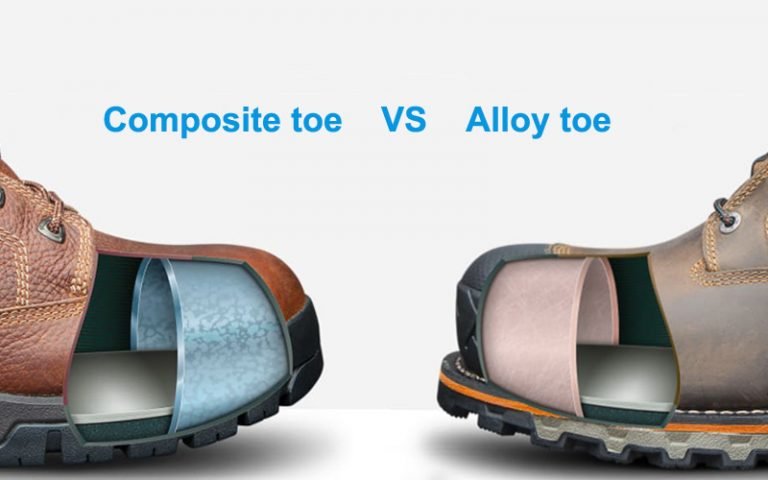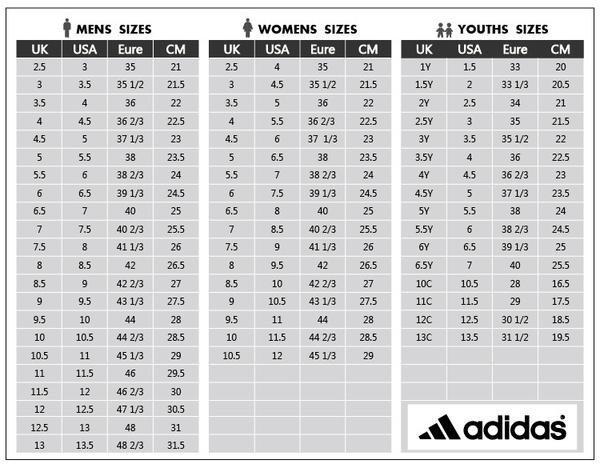Looking to find out how much weight a composite toe can handle? You’ve come to the right place! The safety of your feet is crucial, especially when working in hazardous environments. Composite toe boots have become a popular choice, offering protection without compromising comfort. But just how much weight can they support? In this article, we’ll dive into the world of composite toe boots and explore their weight-bearing capabilities. So, whether you’re tackling heavy-duty tasks or simply curious about the capabilities of these boots, keep reading to discover how much weight a composite toe can hold.
How Much Weight Can a Composite Toe Hold?
In today’s industrial and construction environments, safety is paramount. Workers are required to wear protective footwear that meets the necessary safety standards to avoid any potential hazards. One popular type of safety toe found in work boots is the composite toe. Composite toe boots are gaining popularity due to their lightweight and comfortable design while still providing adequate protection. But just how much weight can a composite toe hold? Let’s delve into this topic and explore the capabilities and limitations of composite toe boots.
Understanding Composite Toe Boots
Composite toe boots are designed to protect the wearer’s feet from potential workplace hazards. Unlike traditional steel toe boots, composite toe boots are made from non-metal materials such as Kevlar, carbon fiber, or plastic. These materials offer several advantages, including being significantly lighter than steel, non-conductive, and providing better insulation.
Composite toe boots are commonly used in industries where workers may be exposed to electrical hazards or need to pass through metal detectors regularly. Additionally, they provide protection against impact, compression, and puncture hazards.
Meeting Safety Standards
Before examining how much weight a composite toe can hold, it’s important to consider the safety standards that these boots must meet. Composite toe boots are subjected to rigorous testing to ensure they comply with safety regulations.
The American Society for Testing and Materials (ASTM) sets the standards for protective footwear, including composite toe boots. These standards specify the maximum amount of force that a composite toe must withstand without deforming to ensure adequate protection. The ASTM F2413-18 standard, for example, requires composite toe boots to withstand a minimum compression load of 2,500 pounds (11.1 kN) and a puncture resistance of at least 1,000 pounds (4.45 kN).
Maximum Weight Capacity
Now let’s answer the burning question: how much weight can a composite toe hold? While composite toes are capable of withstanding significant force, their weight capacity can vary depending on various factors. Some of the key factors that determine the maximum weight capacity of a composite toe include:
1. Material: The specific material used in the composite toe construction plays a vital role in determining the weight capacity. Different composite materials have varying degrees of strength and load-bearing capabilities.
2. Design: The design of the composite toe can also impact its weight capacity. Some manufacturers reinforce the toe with additional layers or incorporate structural elements to enhance its strength.
3. Boot Construction: The overall construction of the boot and the way the composite toe is integrated into the design can affect its weight capacity. A well-built boot with proper reinforcement will offer higher weight-bearing capabilities.
4. Load Distribution: The distribution of weight across the composite toe is crucial in determining its maximum weight capacity. Evenly distributed weight across the entire toe area will ensure optimal performance.
Typical Weight Capacities
While it is challenging to provide an exact weight capacity for composite toes, it is possible to provide some general guidelines based on industry standards and user experiences. It’s important to note that these are approximate values, and individual boot models may vary.
1. Compression Load: Composite toe boots are designed to withstand a compression load of at least 2,500 pounds (11.1 kN). This means they can effectively protect the wearer’s toes against heavy objects such as falling tools, equipment, or machinery parts.
2. Puncture Resistance: Composite toe boots typically have a puncture resistance of at least 1,000 pounds (4.45 kN). They can protect against sharp objects such as nails, screws, or metal shards penetrating through the sole.
3. Impact Resistance: Composite toe boots provide excellent impact resistance, safeguarding the wearer’s toes from heavy impacts or crushing forces. While specific weight capacities can vary, they are generally designed to absorb and distribute the force of impacts.
Composite Toe Limitations
While composite toe boots offer numerous advantages, it’s essential to understand their limitations. Composite toes may not be suitable for all working conditions or hazards. Here are a few considerations:
1. Extreme Weight: While composite toe boots can withstand substantial weight, there is a limit to how much weight they can effectively support. Exceeding the weight capacity may compromise the toe’s protective capabilities and increase the risk of injury.
2. Extreme Temperatures: Composite toes may not offer the same level of insulation as steel toes in extremely hot or cold environments. Workers exposed to extreme temperatures may need to consider alternative safety footwear.
3. Chemical Exposure: Some chemicals, such as strong acids or corrosive substances, can degrade the composite material over time. In such cases, workers should opt for safety footwear specifically designed to resist chemical exposure.
4. Sharp Objects: While composite toes provide excellent puncture resistance, they may not be as resistant to sharp objects compared to steel toes. Workers in environments with numerous sharp objects may need to exercise additional caution.
Choosing the Right Composite Toe Boots
When selecting composite toe boots, several factors should be considered to ensure optimal performance and safety. Here are some key points to keep in mind:
1. Safety Standards: Always ensure that the boots meet the necessary safety standards specified by regulatory bodies such as ASTM, ISO, or EN.
2. Fit and Comfort: Select boots that provide a comfortable fit, allowing for natural movement and flexibility while still securing the foot properly.
3. Durability: Look for boots made from high-quality materials with reinforced construction to ensure they can withstand the demands of your work environment.
4. Hazard Assessment: Evaluate the specific hazards present in your workplace to determine if composite toe boots are suitable or if other types of protective footwear may be more appropriate.
5. Manufacturer Reputation: Research reputable brands known for producing reliable and durable composite toe boots. Reading customer reviews and seeking recommendations can help in making an informed decision.
Conclusion
Composite toe boots have revolutionized workplace safety by offering a lightweight and comfortable alternative to traditional steel toe boots. While the weight capacity of a composite toe may vary depending on factors like material, design, and load distribution, they are designed to meet rigorous safety standards.
Understanding the limitations and capabilities of composite toe boots is crucial in selecting the right footwear for specific workplace hazards. By considering factors such as safety standards, fit, durability, and hazard assessment, workers can make informed choices to ensure optimal protection.
Remember, safety should always be a top priority. Investing in high-quality composite toe boots that meet industry standards will provide peace of mind and help prevent injuries in hazardous work environments.
Composite vs Steel vs Alloy Toe: Which One is The Best For Me?
Frequently Asked Questions
How much weight can a composite toe hold?
A composite toe, made from materials such as carbon fiber, Kevlar, or plastic, is designed to provide protection without adding excessive weight. While the weight capacity can vary depending on the specific type and brand of composite toe, most are able to withstand a substantial amount of weight. On average, a composite toe can typically hold up to 75 pounds of pressure or more. It is important to note that the weight capacity may also depend on the overall design and construction of the safety shoe or boot in which the composite toe is integrated.
What factors determine the weight capacity of a composite toe?
The weight capacity of a composite toe is influenced by several factors, including the quality and type of materials used in its construction, the manufacturing process, and any additional reinforcement or layers. These factors contribute to the overall strength and durability of the composite toe, allowing it to withstand a certain amount of weight and pressure. It is important to follow the manufacturer’s guidelines and limitations to ensure the composite toe’s effectiveness and safety in various working conditions.
Can a composite toe hold more weight than a steel toe?
While composite toes are generally lighter and more comfortable than steel toes, their weight capacity is comparable in most cases. Both composite toes and steel toes are designed to meet or exceed safety standards, including impact and compression testing. Therefore, both types are capable of withstanding significant weight and providing adequate protection. The choice between composite toe and steel toe ultimately depends on personal preference and the specific requirements of the job.
Are there any weight limitations for composite toe safety shoes?
Composite toe safety shoes typically have weight limitations specified by the manufacturer. It is essential to check the product specifications or guidelines provided by the manufacturer to determine the specific weight limitations for a particular composite toe safety shoe model. Exceeding these weight limitations may compromise the integrity and effectiveness of the composite toe and could potentially result in reduced protection.
Can a composite toe withstand heavy loads or impacts?
Yes, composite toes are designed to withstand heavy loads and impacts. They are engineered to provide protection equivalent to steel toes while being lighter and more comfortable. Composite toes undergo rigorous testing to ensure they meet or exceed industry safety standards, including resistance to crushing forces and heavy impacts. However, it is important to remember that the level of protection may vary depending on the specific composite toe design and quality.
Final Thoughts
A composite toe is capable of withstanding significant weight, making it a reliable choice for those in industries that require toe protection. It has been tested and proven to hold up against heavy objects and weighty impacts, providing a high level of safety for workers. With its durable construction and advanced materials, the composite toe offers a strong and protective barrier. Whether it is in construction, manufacturing, or any other physically demanding field, individuals can trust that a composite toe can effectively handle the weight demands of their job, ensuring their feet remain safe and well-protected.






